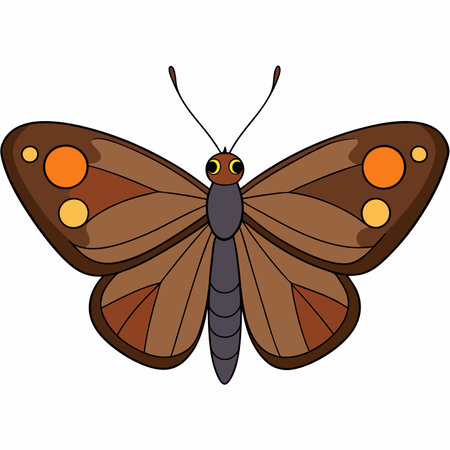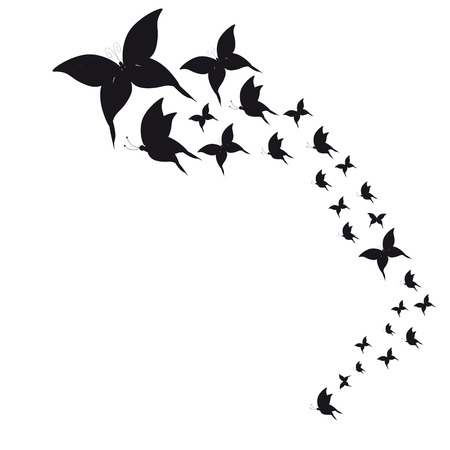Introduction: Celebrating Britains Wildlife on Foot
Exploring the great British countryside is a time-honoured tradition, and there are few better ways to immerse oneself in the nation’s natural heritage than by setting out on foot along a National Trust trail. From the dappled woodlands of southern England to the windswept moors of the north, these carefully maintained walks offer unparalleled opportunities to observe some of Britain’s most iconic species—be it the elusive badger, the vibrant butterfly, or a chorus of songbirds. Each step reveals not only the beauty and diversity of local wildlife but also underscores the vital role that conservation plays in protecting these precious habitats for future generations. As we celebrate Britain’s remarkable fauna, it is essential to remember that responsible exploration—sticking to marked paths, respecting wildlife, and leaving no trace—is key to ensuring that these special places continue to thrive for years to come.
2. The Badger: Nocturnal Woodland Dwellers
Among Britain’s most cherished native mammals, the badger (Meles meles) stands out for its elusive nature and stronghold within ancient woodlands. As nocturnal creatures, badgers are rarely seen by day, preferring the cover of dusk to emerge from their setts and forage through the undergrowth. Their complex social structures and distinctive black-and-white markings have made them an enduring symbol of the British countryside.
Understanding Badger Habitat
Badgers thrive in deciduous woodlands, hedgerows, and undisturbed pastureland—habitats that abound on National Trust estates across England, Wales, and Northern Ireland. They construct elaborate underground homes known as setts, often inherited by generations. These locations are carefully chosen for their proximity to food sources such as earthworms, grubs, and fruit.
Prime Locations for Badger Spotting
| National Trust Site | Region | Habitat Features |
|---|---|---|
| Wimpole Estate | Cambridgeshire | Mature woodland, ancient hedgerows |
| Clumber Park | Nottinghamshire | Mixed woodland, grassland edges |
| Croome | Worcestershire | Lakeside woods, historic parkland |
Best Practices for Observing Badgers Responsibly
- Visit at dusk or dawn for optimal chances of spotting activity near setts.
- Keep noise to a minimum and remain downwind to avoid disturbing these shy animals.
- Avoid using torches or flash photography which can stress wildlife.
The National Trust works diligently to protect badger habitats through sensitive land management and public education. For those keen to glimpse these fascinating mammals in their natural setting, guided walks and evening events are periodically organised—check with local rangers for scheduled opportunities. By respecting both the landscape and its inhabitants, visitors play a vital role in preserving Britain’s living heritage for generations to come.

3. The Butterfly: Symbol of British Summertime
Among Britain’s most cherished natural wonders, butterflies stand out as vivid emblems of the summer months, gracing National Trust landscapes with their dazzling colours and delicate flight. The UK boasts over 50 native butterfly species, each adapted to specific habitats ranging from ancient woodlands to windswept coastal grasslands. Walkers traversing National Trust estates in June and July are treated to seasonal spectacles such as clouds of Common Blues on chalk downs or the rare sight of Purple Emperors gliding through oak canopies.
Diversity and Ecological Importance
Butterflies play a crucial role in British ecosystems, acting both as pollinators and as indicators of environmental health. Their presence—or troubling absence—often reflects the broader state of the countryside. Native species like the Small Tortoiseshell and Peacock rely heavily on native flora, linking them directly to ongoing conservation efforts. Meanwhile, specialist species such as the Marsh Fritillary demand carefully managed grasslands, underscoring the importance of habitat stewardship across National Trust reserves.
Prime Walking Routes for Butterfly Encounters
The National Trust offers some of the finest walking trails for those eager to witness seasonal butterfly displays. Sites like Box Hill in Surrey and Dunstable Downs in Bedfordshire are renowned for their vibrant populations, particularly during peak summer months. On these walks, visitors may spot Painted Ladies migrating from Europe or catch glimpses of elusive species like the Adonis Blue basking on sun-warmed slopes. Guided butterfly walks are also organised at select properties, providing an educational dimension alongside the joy of wildlife observation.
Conservation Success Stories
The resurgence of certain butterfly populations stands as a testament to dedicated conservation work spearheaded by both the National Trust and partner organisations. Efforts such as reintroducing native plants, restoring traditional grazing regimes, and reducing pesticide use have yielded impressive results. Notably, populations of the once-threatened Large Blue have been successfully restored in parts of Somerset following decades of careful habitat management—a genuine triumph for British biodiversity.
With every step along these iconic walking routes, walkers become part of an evolving story—one where community action and responsible enjoyment help secure a future for Britain’s most enchanting summertime residents.
4. Red Squirrels, Deer, and Beyond: Other Iconic Species
Beyond the well-known badgers and butterflies, National Trust walks offer opportunities to encounter a diverse range of quintessentially British fauna. Among these, red squirrels and deer hold special places in the nation’s natural heritage. Observing these species in their native habitats not only delights walkers but also deepens our appreciation for Britain’s unique ecosystems.
Red Squirrels: The Woodland Rarity
The native red squirrel (Sciurus vulgaris) is an increasingly rare sight across much of England, having been displaced by the invasive grey squirrel. However, certain National Trust properties—particularly those in Cumbria and on the Isle of Wight—provide vital refuges for these charismatic creatures. Their presence is a testament to ongoing conservation efforts focused on habitat restoration and careful management.
Key Differences Between Red and Grey Squirrels
| Characteristic | Red Squirrel | Grey Squirrel |
|---|---|---|
| Fur Colour | Reddish-brown | Grey with white underside |
| Native Status | Native to Britain | Introduced from North America |
| Status | Protected, declining population | Common, widespread |
| Main Locations (National Trust) | Cumbria, Isle of Wight, parts of Northumberland | Most of mainland Britain |
Deer: Majestic Icons of British Countryside
Britain’s woodlands and parklands are home to several deer species, including fallow, roe, and red deer. These animals play a vital role in maintaining healthy ecosystems by influencing vegetation patterns and supporting biodiversity through their grazing habits. Walkers may spot herds at dawn or dusk in estates like Knole Park or Attingham Park.
Spotlight on Deer Species Found on National Trust Land
| Species | Main Habitat | Notable Locations (National Trust) | Status |
|---|---|---|---|
| Red Deer (Cervus elaphus) | Moorland, open woodland | Kinder Scout, Exmoor, Holnicote Estate | Brittanys largest native land mammal; thriving in protected areas |
| Fallow Deer (Dama dama) | Parks, mixed woodland | Knole Park, Petworth Park, Charlecote Park | Widespread in historic parklands; introduced species now naturalised |
| Roe Deer (Capreolus capreolus) | Mature woodland edges, farmland margins | Sheringham Park, Croft Castle Estate | Native and increasingly common across southern Britain |
Rare Birdlife: From Woodlands to Wetlands
The mosaic of habitats managed by the National Trust supports a rich variety of birdlife. Keen-eyed visitors might spot elusive species such as the nightjar on heathland walks, marsh harriers soaring over reedbeds, or even hear the haunting call of curlews across upland moors. Each bird plays a critical role within its ecosystem—whether as pollinators, seed dispersers or indicators of environmental health.
Ecosystem Roles: Why These Species Matter
The interconnectedness of British wildlife is evident throughout National Trust landscapes. Red squirrels help regenerate native woodlands by dispersing seeds; deer shape plant communities through selective browsing; birds contribute to pest control and pollination. By observing these iconic animals on your walk, you gain insight into the delicate balance that sustains local biodiversity—and the importance of ongoing conservation initiatives led by the National Trust.
5. Seasonal Highlights on National Trust Walks
One of the joys of exploring National Trust walks across Britain is witnessing how both landscape and wildlife evolve through the seasons. Each period brings its own natural spectacle, offering unique opportunities to observe iconic British species in their element. Understanding these seasonal rhythms can greatly enhance your wildlife spotting adventures.
Spring: Awakening Life
Spring breathes new life into woodlands and meadows. Badgers emerge from their setts at dusk as the days lengthen, and bluebells transform ancient forests into vibrant carpets of colour. Birdsong crescendos as migratory species like swallows and chiffchaffs return, filling the air with a sense of renewal. For butterfly enthusiasts, this is the season to seek out the rare Duke of Burgundy or the vivid orange-tip fluttering among early wildflowers.
Summer: A Flurry of Activity
By summer, British landscapes are at their lushest. Butterflies such as the peacock and comma are abundant, dancing along hedgerows and sun-dappled glades. Grasslands come alive with crickets and bees, while dragonflies patrol tranquil ponds. Early mornings or late afternoons are often best for observing elusive mammals; look for badgers foraging or fox cubs playing at the woodland edge.
Autumn: Transformations and Migrations
Autumn signals dramatic change. Hedgerows burst with berries, attracting thrushes and other migratory birds preparing for long journeys south. Fungi erupt in all shapes and sizes beneath ancient oaks, while deer rutting displays become a highlight in parklands such as those at Knole or Dunham Massey. The cooler air makes wildlife more active during daylight hours—ideal for keen-eyed walkers.
Winter: Subtle Encounters
Winter’s bare branches reveal hidden nests and roosting birds otherwise concealed by foliage. Crisp mornings offer tracks in frost or snow—clues to nocturnal animals like badgers and foxes. Waterfowl congregate on lakes, bringing opportunities to spot species such as tufted ducks and teal. Silence reigns, but patient walkers can be rewarded with close encounters, especially in less-visited reserves.
Maximising Wildlife Spotting Opportunities
To make the most of each season’s highlights, timing is everything: dawn and dusk tend to be prime periods for animal activity, particularly for mammals like badgers or owls on the hunt. Carry binoculars for distant sightings, tread quietly to avoid startling wildlife, and dress appropriately for unpredictable British weather. Consult local National Trust rangers or noticeboards for recent sightings—they often provide invaluable up-to-date tips based on current conditions.
The ever-changing tapestry of British nature ensures that every walk holds new discoveries, whether you’re tracing the flight path of butterflies in high summer or tracking badger prints across a wintery trail.
6. Responsible Wildlife Watching: Walking with Care
Exploring National Trust trails offers a unique opportunity to encounter Britain’s remarkable wildlife, from elusive badgers to vibrant butterflies. However, with this privilege comes the responsibility to observe these species respectfully, ensuring our enjoyment does not come at their expense.
Understanding Respectful Observation
At the heart of responsible wildlife watching is the principle of minimising disturbance. Whether you’re hoping to glimpse a fox darting through woodland or watch dragonflies skimming over a pond, it’s essential to remember that these spaces are first and foremost habitats for wildlife. Always maintain a safe and respectful distance—using binoculars or cameras with zoom lenses helps reduce the urge to get too close. This prevents stress or disruption to animals, particularly during sensitive times such as breeding or nesting seasons.
Practical Guidance on Walks
Stick to marked paths and avoid trampling through undergrowth where smaller creatures might be hiding. Keep conversations low in volume and avoid sudden movements that could startle wildlife. If you’re walking with dogs, ensure they are kept on leads in areas where ground-nesting birds or mammals may be present. These simple steps not only protect wildlife but also enrich your own experience by allowing natural behaviours to unfold undisturbed.
Supporting Conservation Efforts
Your actions as a walker contribute directly to conservation outcomes. Consider supporting local National Trust initiatives by participating in guided walks, volunteering, or donating towards habitat restoration projects. Sharing your observations with rangers can also aid ongoing monitoring efforts. By adopting a thoughtful approach, we help ensure that iconic British species continue to thrive along our favourite footpaths for generations to come.
7. Planning Your National Trust Wildlife Walk
Essential Gear for a Rewarding Experience
Preparation is key to making the most of your wildlife adventure across National Trust sites. Start with sturdy walking boots—British paths can be muddy or uneven, especially in spring and autumn. A reliable waterproof jacket is indispensable, given the UK’s famously changeable weather. Binoculars enhance your chances of spotting elusive species, whether you’re searching for badgers at dusk or butterflies basking in the sunshine. Don’t forget a field guide specific to British fauna; it will help you identify and appreciate the iconic species unique to each region.
Recommended National Trust Locations
The UK is rich with diverse habitats under National Trust stewardship, each offering unique opportunities to encounter Britain’s most cherished wildlife. Head to Wicken Fen in Cambridgeshire for dragonflies and rare birds amidst ancient wetlands, or explore Stackpole in Pembrokeshire for an abundance of otters and butterflies along wildflower meadows and freshwater lakes. If you’re keen on mammals, Dunstable Downs offers chalk grassland ideal for badger spotting, while Brownsea Island in Dorset is famed for its red squirrels and migrating waders.
Supporting Resources for Nature Enthusiasts
The National Trust provides a wealth of resources to enrich your walks. Many sites offer downloadable trail maps and seasonal wildlife guides on their websites, helping you plan according to what’s likely to be seen at different times of year. For those new to wildlife watching, look out for guided walks led by local experts—these can provide invaluable insights into animal behaviour and conservation efforts. Consider joining the National Trust as a member; not only does this support ongoing habitat protection, but it also grants free access to hundreds of reserves across the country.
Final Tips for a Memorable Walk
Pack light snacks and plenty of water, and always respect the countryside code: keep to marked paths, take litter home, and observe wildlife quietly from a distance. With thoughtful preparation and an open mind, every walk becomes an opportunity to connect with Britain’s natural heritage and its remarkable array of species—from badgers emerging at twilight to butterflies dancing through summer meadows.


